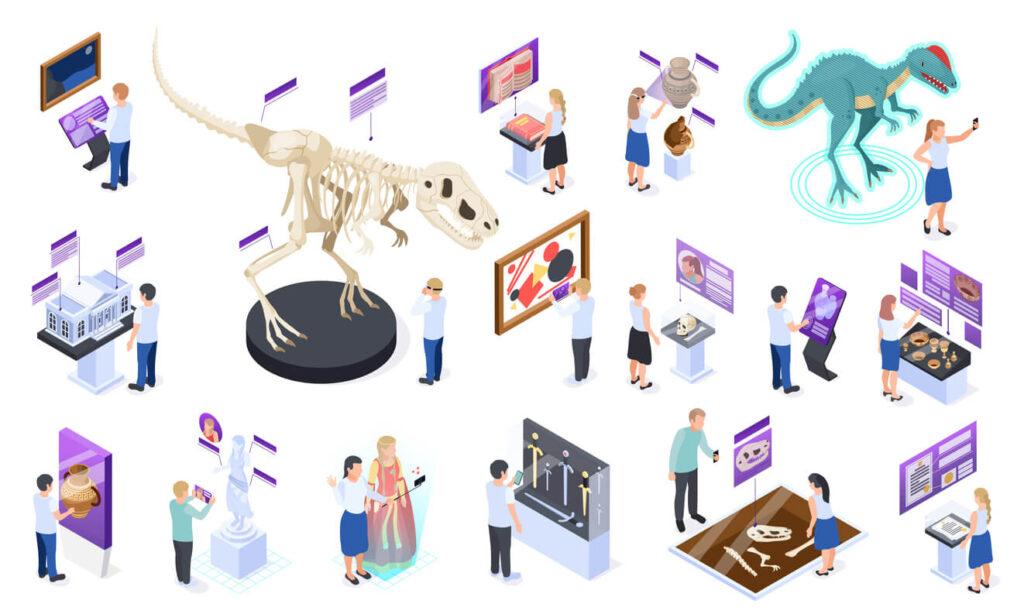Affordable & Innovative VR Solutions for Schools: Cost-Effective Options for Enhanced Learning
Virtual Reality (VR) technology is revolutionizing the educational landscape, offering immersive learning experiences that engage students and deepen understanding. Though, one of the major barriers to adoption is cost. In this complete guide, we will explore affordable and innovative VR solutions for schools, highlight their benefits, and share practical tips and case studies to help educators choose the best cost-effective options for enhanced learning.
Why VR in Education?
VR technology in classrooms provides endless opportunities for interactive learning. From virtual field trips to hands-on scientific experiments, VR makes abstract concepts tangible and accessible. Yet,integrating VR into schools has traditionally been costly,prompting a growing need for budget-friendly solutions.
- Immersive Learning: Students engage with lessons in a virtual environment,boosting retention and understanding
- Diverse Subjects: VR can be integrated across STEM,humanities,arts,and vocational training
- Inclusivity: VR bridges gaps for students with different learning styles and needs
Benefits of Affordable VR Solutions in Schools
Many educators worry that lower-cost solutions might compromise on quality. However, with recent advances, affordable VR technologies prove both innovative and effective for educational purposes.
Top Advantages:
- Cost savings: Modern VR systems are increasingly budget-friendly, allowing schools to allocate resources efficiently
- Accessibility: Entry-level VR devices are now more user-friendly, with simple setups and minimal technical expertise required
- Scalability: Schools can start small and expand VR implementations over time
- Enhanced Collaboration: Multi-user VR experiences foster teamwork and social learning among students
impact on Student Motivation & Engagement
Recent studies indicate that students exposed to VR-enhanced lessons demonstrate deeper interest, better participation, and improved academic outcomes. Interactive environments foster curiosity and collaboration, transforming passive learning into active exploration.
Types of Cost-Effective VR Solutions for Schools
Schools seeking VR solutions need not invest in expensive headsets or custom hardware. Many affordable and innovative options exist that provide robust learning experiences on a budget:
1. Mobile-based VR Headsets
- Examples: Google Cardboard, Merge VR
- How it effectively works: Use students’ smartphones and affordable plastic or cardboard viewers to access VR apps
- Pros: Very low cost, easy to distribute, minimal maintenance
2. Standalone VR Headsets
- Examples: Oculus Quest 2, Pico G2 4K
- How it effectively works: All-in-one devices require no computer or phone, offering high-quality experiences for a mid-range price
- Pros: Portable, wireless, more immersive than mobile VR
3. Desktop-Based VR solutions
- Examples: HTC Vive, Valve Index
- How It Works: Run refined VR applications using classroom computers
- Pros: Powerful graphics, suitable for advanced applications (but higher price than mobile/standalone headsets)
4. VR Content Subscription services
- Examples: ClassVR Portal, Veative, EduVR
- How it effectively works: Access curated VR content libraries tailored for education, frequently enough bundled with device purchases or available as stand-alone subscriptions
- Pros: Easy lesson planning, supports interdisciplinary learning, scalable pricing
Practical Tips for Integrating VR in Schools on a Budget
To maximize cost-effectiveness and learning outcomes, consider these essential tips for implementing affordable VR solutions in schools:
- Start Small: Pilot a VR program with one class or subject before scaling up school-wide
- Leverage Free VR Resources: use open-source educational VR apps and 360-degree videos already available online
- Seek Grants & Partnerships: Apply for educational technology grants, or team up with local businesses to offset upfront costs
- Train Teachers: Offer professional development to help educators integrate VR into lesson plans efficiently
- Reuse Existing Devices: Repurpose school-owned tablets and smartphones to operate mobile VR viewers
- Evaluate & Adapt: Regularly assess VR’s impact through student feedback and teaching outcomes; optimize usage based on real data
Case Studies: Affordable VR Success Stories in Schools
Case Study 1: Google Expeditions in Rural School Districts
A rural elementary school implemented Google Expeditions using inexpensive Google Cardboard viewers and existing classroom Android devices. students embarked on virtual field trips to ancient Egypt and coral reefs, transforming geography classes and increasing engagement. The project cost less than $500, funded by a local education grant.
Case Study 2: Merge VR in Middle Schools
A Kansas middle school adopted Merge VR headsets for science labs. Using free and low-cost apps, students explored anatomy, space, and chemistry models interactively. Teachers report higher student motivation and enhancement in test scores, affirming VR’s positive impact at an affordable price point.
Case Study 3: VR Content Subscriptions in High School STEM programs
Several high schools introduced ClassVR subscriptions, which included headsets and a comprehensive educational content library. Lessons ranged from physics simulations to historical reenactments. Costs were divided among local district schools, making technology available for under $15 per student annually.
First-Hand experience: Teacher Testimonials
“VR brought history alive for my students. Seeing their reactions during virtual field trips made me realize the potential of immersive learning. We achieved this with affordable viewers and apps!”
– Ms. Torres, 5th Grade Teacher
“As a science educator, Merge VR revolutionized our lab activities. The devices fit our budget and inspired students to dive deeper into complex topics — hands-on, literally!”
– Mr. Simmonds, Middle School Science Teacher
conclusion: Making VR Accessible for All Schools
Affordable and innovative VR solutions for schools are more accessible than ever, proving that cost doesn’t have to be a barrier to enhanced learning. From simple mobile-based headsets to versatile standalone devices and comprehensive content services, educators can harness the power of VR to create engaging, impactful, and inclusive classroom experiences. by starting small, making strategic investments, and leveraging free or low-cost resources, schools can introduce transformative technology and open new horizons for their students—no matter the budget.
If you’re considering VR for your school, evaluate your needs, explore the options highlighted above, and take the first step toward a future where every student can experience immersive, meaningful learning.
Keywords: Affordable VR solutions for schools, cost-effective VR in education, innovative VR technology for classrooms, VR content services, educational VR devices, budget-friendly VR headsets, integrating VR in schools.

